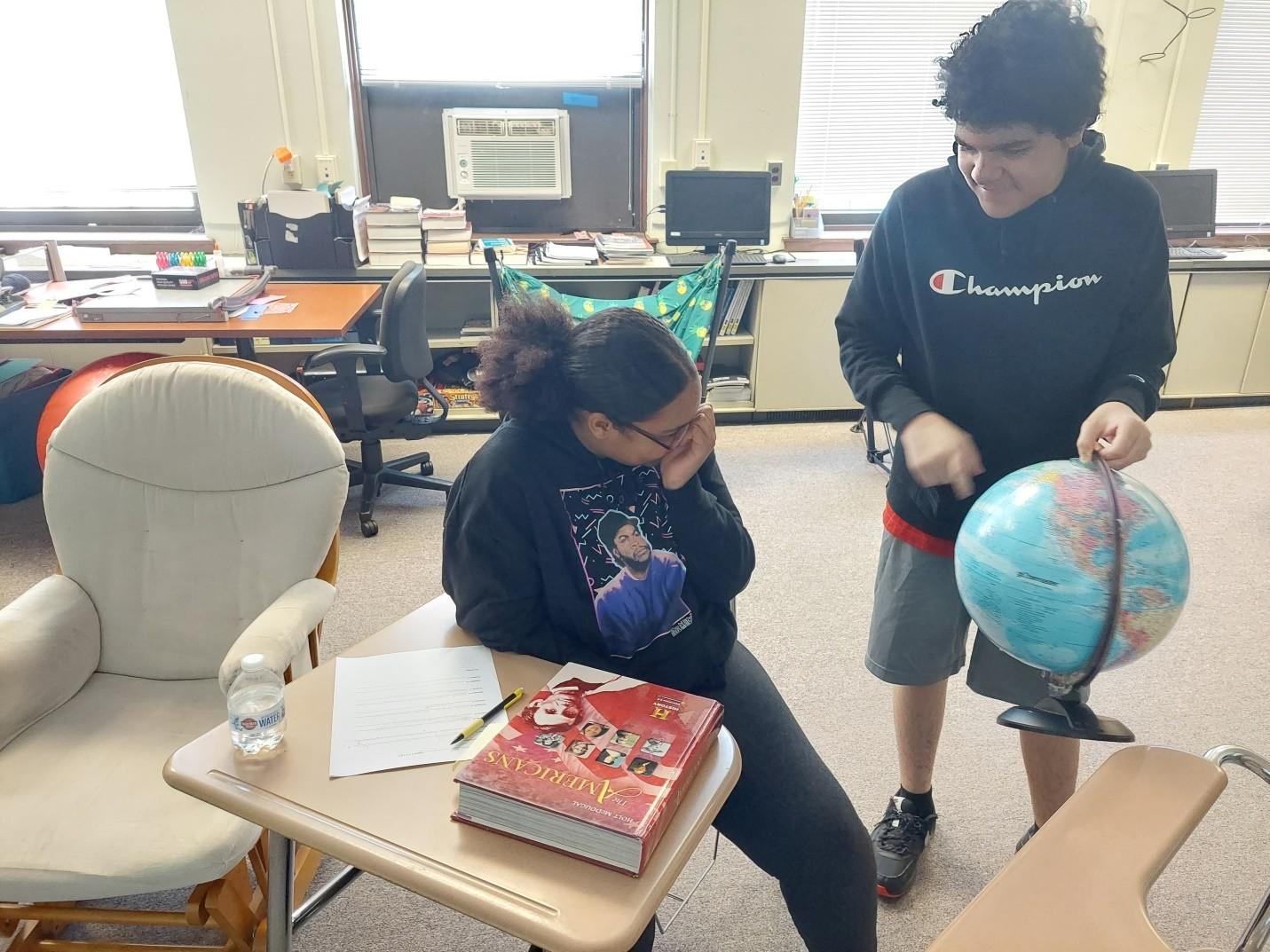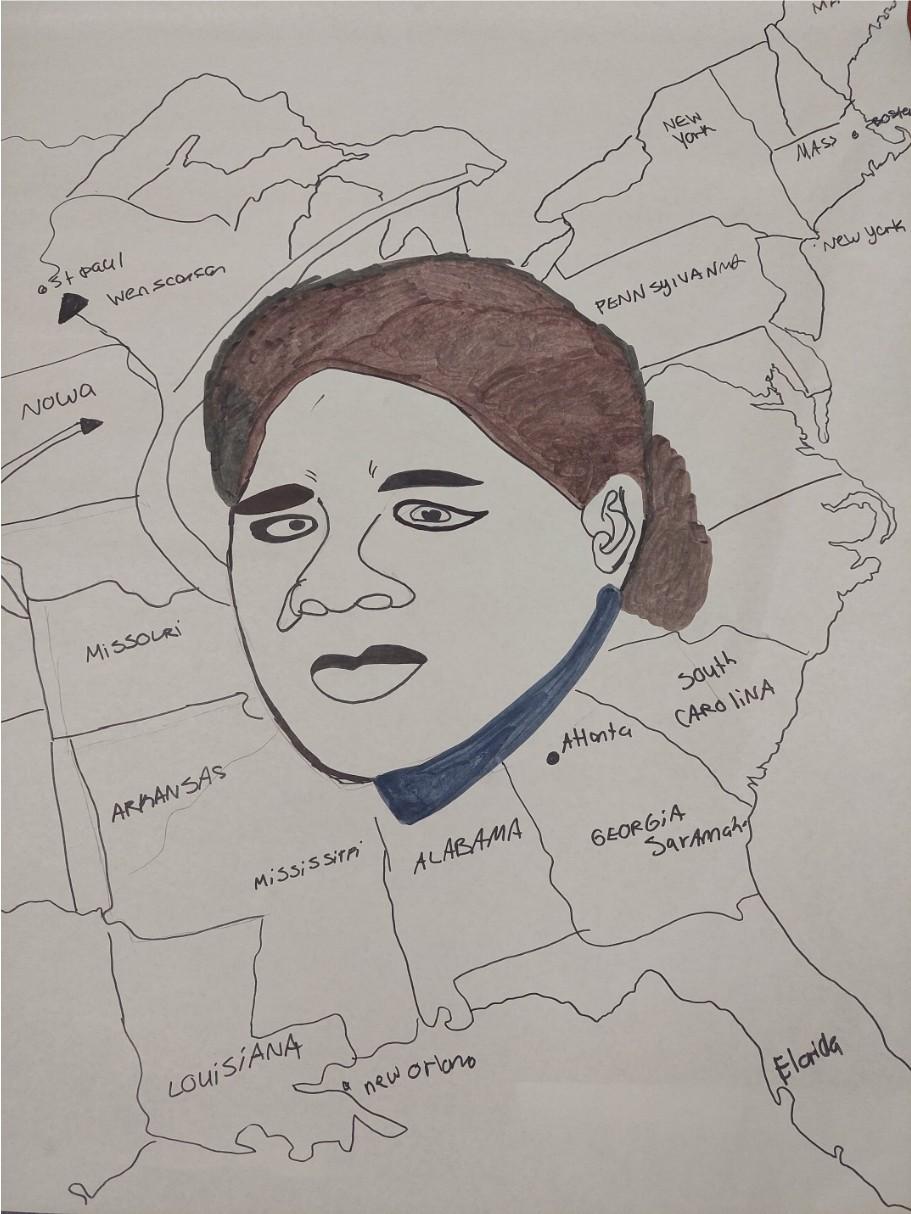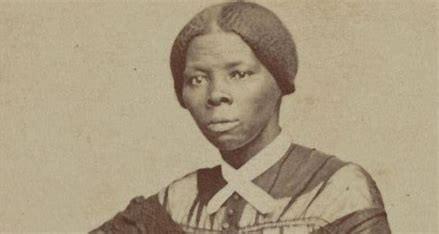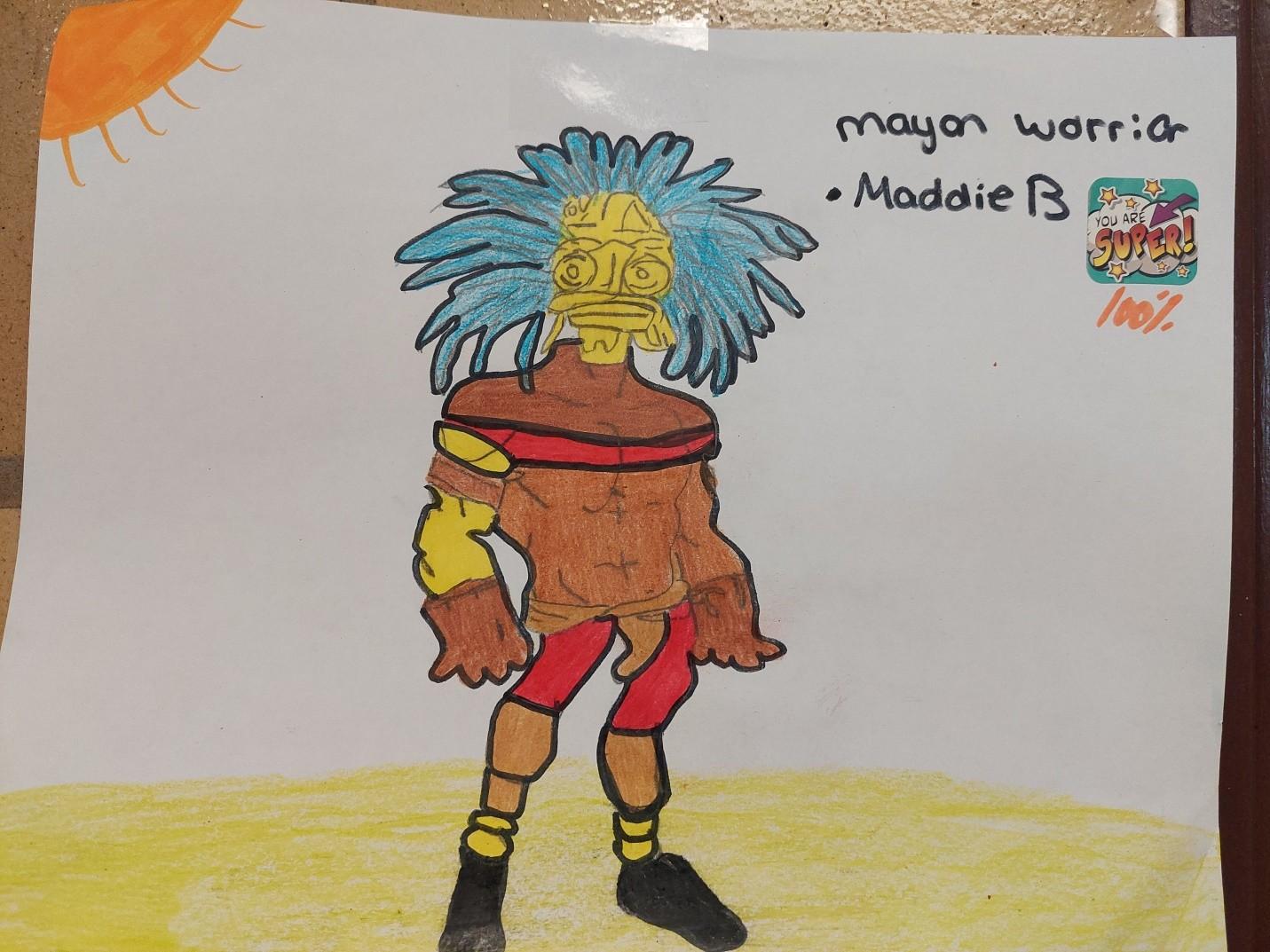Maddie Battershield
Orchard Street Academy

2022-2023


 Harriet Tubman and Underground Railroad Map
Harriet Tubman and Underground Railroad Map
Maddie Battershield
Mr. Villagomez
ELA 9
March 24th, 2023
The Brave Work of Harriet Tubman

INTRODUCTION
“I looked at my hands to see if I were the same person. I met peace with God and all mankind. There was one of two things that I have a right to. I go to prepare a place for you. Don’t ever stop, keep on going if you want a taste of freedom.” Harriet Tubman said these last words on March 10, 1913. She was a strong woman that everyone loved to be around. Her bravery is a powerful story because of the hard circumstances she had to survive in. Harriet Tubman’s bravery was proven by her escape and by her attempt at freeing others.
Tubman’s bravery proven by her escape
Tubman’s bravery was proven by her escape. Araminta “Minty”
Ross was born in Dorchester County, Maryland. She changed her name to Harriet Tubman when she married John Tubman and took her mothers name “Harriet.” Her mother, Harriet Green, was the cook on the plantation owned by Mary Pattison Brodess. As a child she suffered from narcolepsy because she was hit by a two pound weight when a store owner tried to stop an escaping slave. Harriet suffered fainting spells and headaches as a result (Clinton). She said that she experienced dreams and visions “guided her as she faced treacherous terrain, search dogs, and bands of roving slave hunters (Captivating History). Working as a lumberman with her father, Harriet found out about the Underground Railroad from freed blacks. She would follow the network all the way to freedom in Philadelphia.
She changed her name to Harriet Tubman when she married John Tubman and took her mother’s name “Harriet.”
Tubman’s bravery proven by freeing others
Tubman’s bravery was proven by her attempt at freeing others. People started to call Harriet Tubman “Moses,” after the Bible hero who freed Jews back in the days. She was also very loyal because she made sure her parents got freed first then came back and helped the rest of the slaves who were suffering “Under my Underground I never ran off the track and I never lost a passenger” (Hobson). She used the force of her convictions to save the lives of others (Captivating History). She was a brave woman who made 19 trips back and forth to free slaves. (Clinton). She is brave because she escaped by herself and she went back to free family, friends, and others. “Freedom seekers used several means to escape slavery. Most often they travel by land on foot, horse, or wagon under the protection of darkness. Drivers concealed self liberators in false compartments built into their wagons or hid them under loads of produce. Sometimes fleeing by train (Captivating History). This is how Harriet Tubman freed her family and other people
During the Civil War, Harriet also showed her bravery by being the first woman to lead a Armed Military in June 1863. Harriet was a spy and a nurse. Harriet Tubman helped ensure the final defeat of slavery in the United States by serving as a scout and a nurse, she received little pay recognition (Clinton).
After the Civil War when African Americans were free, Harriet Tubman continued her bravery in the fight for women's rights. She was a suffragist who fought for women's rights. She also helped establish a nursing home for African Americans on her property in Auburn, New York (Clinton). Up until the end of her life, Harriet Tubman showed her bravery by helping and freeing others.
CONCLUSION
In conclusion, Harriet Tubman had a lot to say. She loved giving speeches and helping the people who needed the most help. She is a brave woman who sacrificed her life to keep going back in a disguise to help family, friends, and etc. When she finally rescued her parents, her mom stopped and said “Harriet, how does it feel to be free?” Harriet felt
so accomplished that she started crying and said, “It's good, Ma, it’s wonderful.” Once freed, Harriet Tubman shared that freedom with as many people as she could help.
WORKS CITED
Captivating History. “The Breathtaking Story of Harriet
Tubman.” YouTube. September 1, 2020. February 8, 2023<https://www.youtube.com/watch?v=1DdtJKwh8oY>.
Clinton, Catherine. “The Road to Freedom.”
Bookshop.org. February 8, 2023
<https://www.google.com/books/edition/Harriet_Tubman/9f5Kg5DgbsC?hl=en>.
Hobson, Jenell. “Breathtaking courage of Harriet
Tubman.” TED-Ed. 24 July 2018. 9 March 2023.
<https://www.youtube.com/watch?v=Dv7YhVKFqbQ>.
 Maddie Battershield
Maddie Battershield
Mr. Villagomez
ELA 9
September 11, 2022 Kimonos
Introduction
Kimonos are popular in Japanese history and even in some other countries. The colors of the kimonos are usually based on the traditional Japanese combination of the seasons. gender or sometimes on political and family ties. Some kimonos were art and could cost more than a family home. Some people would keep their kimonos and pass it down to family members. Kimonos were popular for many reasons, one main reason was it could easily be layered, or altered to suit any season.
Heavy silk kimonos could be worn in the fall and winter. The yukata is still commonly worn during seasonal summer festivals and fireworks displays. in the late 1990s. The kimono's delicate patterns, sumptuous colors and striking silhouette suddenly appealed to a fashion conscious generation who were keen to stand out from the crowd, especially on social media.
Body
Though kimonos are often handed down through family members the garment can be extremely expensive, sometimes costing several hundred pounds. traditionally made of costly materials such as silk and linen, but also because its seams and edges must be finished by hand.
Authentic Japanese kimonos can cost between $40 to $800 or more, depending on the material they are made out of, the pattern, and the person who designed the garment.
Some people who speak English might look at a kimono as a “wearing thing.” Its long history is one of the best examples of how clothing confers a sense of identity. Japanese people typically wore either ensembles consisting of separate upper and lower garments like trousers or skirts. Also the first ancestor of the kimono was born in the Heian period 794-1192. In the Tokugawa period, in the Showa period most common colors of the kimono were black, white, and grey.
To make your own kimono, all you will need is a piece of lightweight fabric, like cotton or a knit blend, scissors, and a needle and thread. When you have all your fabric, you will want to measure a piece of the fabric that will fall around your hips and have 3/4 length of sleeves.
CONCLUSION
The kimono has been a part of Japanese culture since time immemorial. The garment is not as popular as it was in the past, current trends show that this is a part of the Japanese heritage that is not about to disappear at all. Today, there are numerous schools where young people are taught how to make and put on the kimono.

Maddie Battershield
Mr. Villagomez
ELA 9
October 3, 2022
Sherlock Holmes: A Dynamic Character in A Lady in Pink
INTRODUCTION
Brief summary of the story
In A Lady in Pink, Sherlock Holmes and Dr. John Watson were intrigued by a series of “suicide” cases throughout the city of London. Healthy and stable people were dying in seemingly random deaths. While at a crime scene, a lady dressed in pink named Rachel had missing luggage. This was the breakthrough clue that helped Holmes and Watson eventually solve the case. A cabbie was inciting people to take their own lives.(Central Idea) Sherlock is a round, static character who remained the same until he met Dr. John Watson. (Thesis Statement) Sherlock’s flat character expressed in his empathy was changed by the influence of Dr. Watson.
Sherlock Holmes did not have empathy before meeting Watson. Empathy is the ability to feel what another person feels. In Lady in Pink, there are examples showing Holmes’s lack of empathy. Holmes did not understand why the pink lady would still feel sad about her daughter’s death 18 years ago (Rachel). When he was in the lab at St. Bart’s Hospital, Holmes’s assistant showed a love interest in him which he squashed. When she offered to go out and get coffee, he ignored her by telling to get him a cup. When she put on lipstick, he noticed it and mentioned that she looked good but rebuffed her interest
In his own apartment, he treated Mrs. Hudson like a maid, not like a landlady. These examples show that empathy was an area where Holmes needed help.
Sherlock Holmes developed empathy after meeting Watson. Sherlock’s brother Mycroft (the smartest person he knew) noticed Watson’s effect on Sherlock. Mycroft mentioned that Sherlock
“doesn’t have friends.” Watson became his friend. Watson acted like his personal coach and confidant. He helped Sherlock
understand how to treat a lady respectfully, including his lab assistant, Mrs. Hudson, and Lady detective. Through the patient and consistent help of Dr. John Watson, Sherlock Holmes developed the empathy that changed him as a character and as a person.
CONCLUSION
In conclusion, some people can have a large positive effect on others. Dr. Watson altered Holmes’ flat, obnoxious personality into one developing a sense of empathy for others. In A Lady in Pink, his character metamorphosed into a fully round, dynamic character with a better sense of understanding other people’s feelings.
 Maddie Battershield
Maddie Battershield
ELA 9
Mr. Villagomez
So Far from the Bamboo Grove Book Report
By Maddie BattershieldHave you ever experienced losing your home and starting a new life? In the book So Far from the Bamboo Grove Book
(written by Yoko Kawashima Watkins and published by HarperCollins in 1986) is about how the author evacuated their home northern Korea and settled back in Japan
Yoko, her mom, and Ko got kicked out of their home because Japan had lost the war and the Korean Communists , they have lost everything including there father he has not came back to them yet they travel and travel they get on a train and found a spot for them they did not have food all they had was orange peels and a canteen of water, they come across a woman who is pregnant and has her baby unfortunately the baby didn't live and ko had to give up her blanket for the poor woman there was blood all over it, they are making up a plan on cutting ko’s hair and turning her into a boy so they can get to where they need to be they hide the sword in ko’s leg pretending that ko has hurt her leg. They leave a note to tell the brother where they just came from.. They are letting Ko start school and Yoko.
Yoko and Ko’s mom left for a few days to go visit their grandparents, when she got there she found out that her grandparents all died. Ko and Yoko were waiting for mom for a couple of days, Ko gets out of school and as she's walking she spots her mother and runs up to her, Ko and Yoko’s mom didn’t look so good she looks sick and Ill. she laid her head down on ko’s lap she says to her that there grandparents are dead, Ko is devastated, and mom looked like she was dying. She asked her where yoko is and Ko explained that she will be back from school because she stayed a couple of minutes behind to finish work Ko
is looking around for Yoko when she tries to talk to her mother her mother slowly died and Ko was sobbing and crying Yoko finally got there and saw mother. A lady that stuck with their mom for a while was talking to them. Shortly after the truck came, because they wanted to cremate their mother.
Yoko and Ko checked their mothers bag for money. They found a lot of food and other stuff. The cremation guys said that it was a lot of money and Ko and Yoko didn't believe it because it shouldn’t have cost that much. They hesitated and didn’t do it. A couple of days later the lady came up to them again and asked them if they wanted to stay with them for a while Ko and Yoko agreed and said yes they lived in a decent home they were not so happy because their mom had died.




